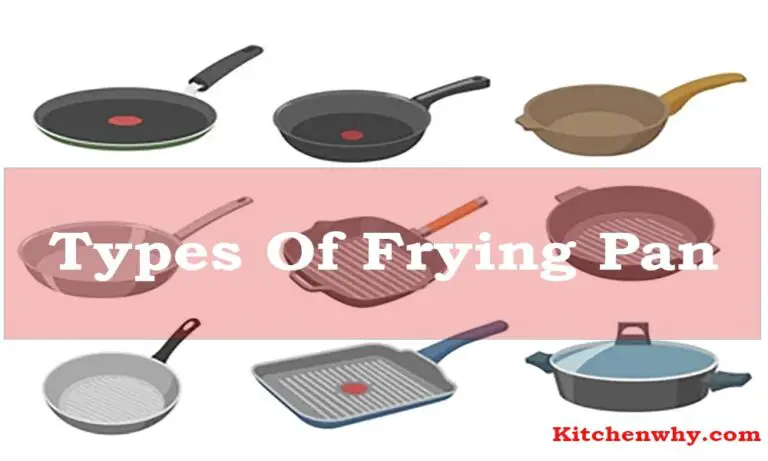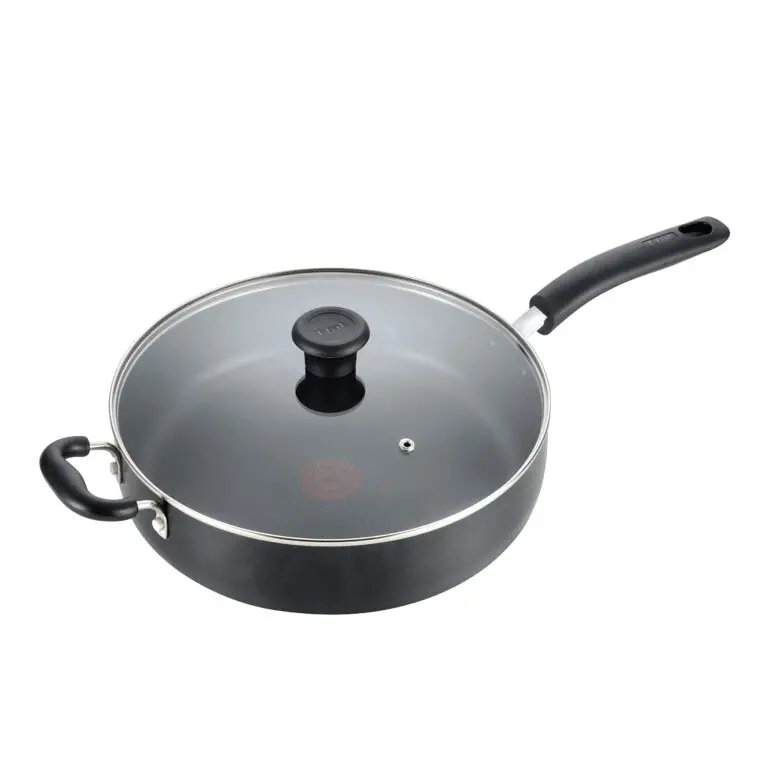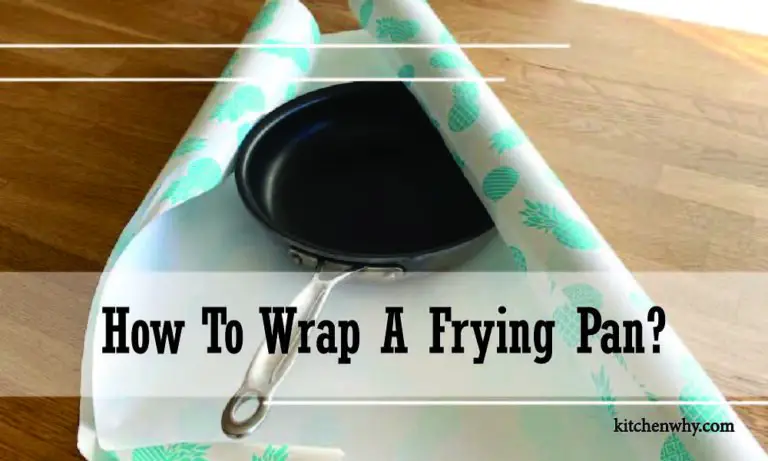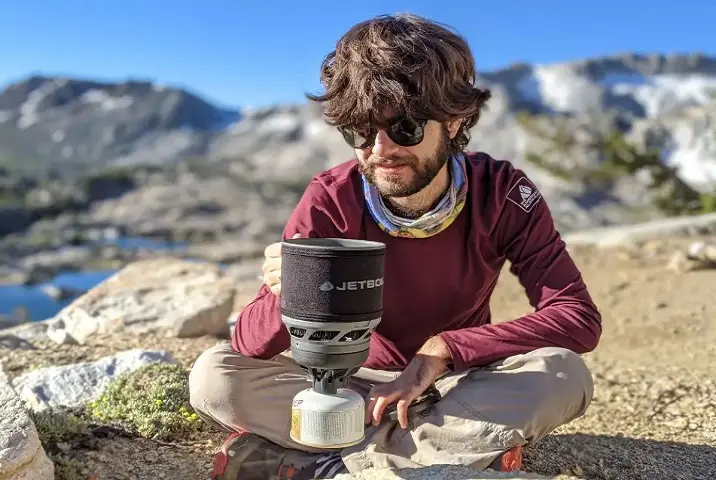Can You Cover a Pan With Aluminum Foil?
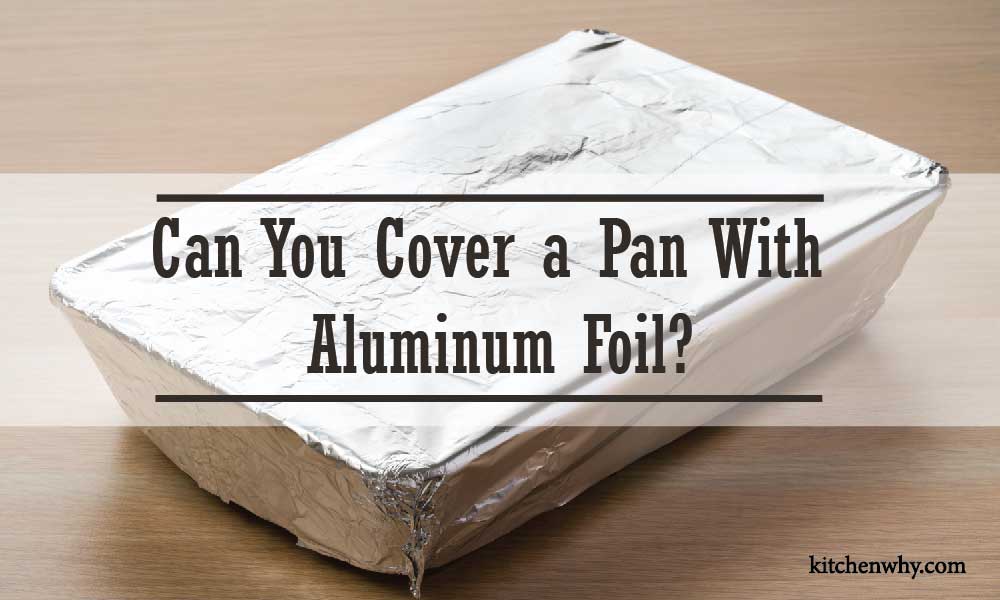
Yes. Aluminum foil has multiple uses in the kitchen. You can cover a pan with foil and cook it. Aluminum foil is also useful for baking. The foil acts as a barrier between the heat source and the baked goods.
If you need to cover a pan with aluminum foil, make sure to do it properly so that the food doesn’t come into contact with the metal. You can either use pre-cut sheets of foil or cut your own from a roll. To cover a pan with foil, start by tearing off a piece that’s big enough to wrap around the top and sides of the pan.
Then, place the foil over the top of the pan and smooth it down so that it’s flush against the surface. If you’re using a sheet of foil, fold over any excess so that it doesn’t hang over the edge of the pan.
Can You Cover a Pan With Aluminum Foil?
Yes, you can cover a pan with aluminum foil. Aluminum foil is a versatile material commonly used in cooking and baking. It can be used to cover pans to retain heat, prevent splattering, or keep food moist during the cooking process.
Additionally, aluminum foil can also be used for wrapping food for storage or transport. When using aluminum foil to cover a pan, make sure it fits securely and covers the entire top to create a tight seal. This will help to keep the heat and moisture trapped inside the pan.
However, it’s important to note that some caution should be exercised when using aluminum foil with acidic or salty foods, as prolonged contact with these types of foods can cause a reaction and affect the taste.
The Versatility of Aluminum Foil: Aluminum foil has been a reliable companion in the kitchen for decades. Its unique properties make it an excellent choice for various culinary applications. It is pliable, heat-resistant, and has a reflective surface, which helps to distribute heat evenly. These characteristics make aluminum foil an ideal material for covering pans during cooking.
Benefits of Covering a Pan With Aluminum Foil:
- Heat retention: One of the main advantages of covering a pan with aluminum foil is its ability to retain heat. When the foil is placed securely over the pan, it creates a tight seal, preventing heat from escaping. This can be particularly useful when you want to keep your food warm for an extended period or allow it to cook more evenly.
- Splatter prevention: Covering a pan with aluminum foil can help minimize splattering. Whether you’re frying, sautéing, or simmering, using foil as a protective cover can prevent oil or liquid from splashing out, reducing the mess and making cleanup easier.
- Moisture retention: Aluminum foil acts as a barrier, preventing moisture from evaporating too quickly. This can be advantageous when you want to keep your food moist during the cooking process. The foil traps the steam inside the pan, enhancing the flavors and tenderness of your dishes.
Considerations When Using Aluminum Foil:
While aluminum foil is generally safe to use in the kitchen, there are a few considerations to keep in mind:
- Avoid acidic or salty foods: Prolonged contact between aluminum foil and acidic or salty foods can cause a reaction, resulting in a metallic taste. If you’re cooking with ingredients like tomatoes, citrus fruits, or marinated meats, it’s advisable to use an alternative cover, such as a lid or parchment paper.
- Proper sealing: When covering a pan with aluminum foil, ensure that it fits securely and covers the entire top. This will create a tight seal, preventing heat and moisture from escaping. A loose or incomplete cover may compromise the cooking process and affect the results.
- Safety precautions: Always exercise caution when handling aluminum foil, as it can become hot during cooking. Use oven mitts or tongs when removing the foil from a hot pan to avoid burns.
Process of How to Cover a Pan With Aluminum Foil?
When covering a pan with aluminum foil, it is important to ensure that the foil is tightly secured to the pan so that the steam and heat generated by the oven can still penetrate the food, while still preventing messes. This guide will provide step-by-step instructions on how to cover a pan with aluminum foil, ensuring that you get the most out of this kitchen staple.
Gather the Necessary Supplies
To cover a pan with aluminum foil, one needs to gather the necessary supplies, such as aluminum foil and a pan. Then the pan needs to be cleaned and dried. Cut a piece of aluminum foil that is large enough to cover the pan. Place the foil over the pan and mold it to the pan’s shape. Trim off any excess foil and secure the foil to the pan’s edges. This process should be completed with care to ensure that the aluminum foil is securely and evenly placed over the pan.
Step-by-Step Process of How to Cover a Pan With Aluminum Foil:
1. Clean and Dry the Pan: Make sure that the pan is clean and dry before covering it with foil.
2. Measure and Cut Foil: Measure the length of the pan and cut the aluminum foil to fit. Clean and dry the pan to ensure a secure fit. Cut the aluminum foil to the same size as the pan. Place the foil over the pan and mold to the shape of the pan
3. Pre-Shape Foil: Pre-shape the aluminum foil by folding it lengthwise, giving it a crease. This will make it easier to fit into your pan.
4. Place Foil Over Pan: Place the pre-shaped aluminum foil over your pan.
5. Smooth Foil Over Pan: Smooth the foil to the edges of your pan.
6. Secure Foil to Edges of Pan: Secure the foil to the edges of the pan by crimping it along the edges.
7. Trim Excess Foil: Trim any excess foil if necessary and tuck it in around the edges of the pan to secure it. Once done, you have successfully covered the pan with aluminum foil.
To secure the foil to the pan’s edges, fold the edges under the pan.
Finally, your pan is ready to use with the aluminum foil cover.
Similar Blog:
- Is Scratched Stainless Steel Cookware Safe? Read Here
- Is Cast Iron Pan Good for Dosa? Read Here
- Is Bronze Cookware Safe? Read Here
- Can You Fry Chicken in Aluminum Pan? Read Here
How to Cover a Pan Without Foil?
If you’re looking to avoid using aluminum foil to cover your food, plenty of other options are available. Here are a few alternatives to covering a pan without foil:
1. Use parchment paper:
Parchment paper is great for lining baking sheets and pans. It’s also oven-safe, so you can use it to cover your food while it’s cooking.
2. Use a lid:
If your pan has a lid, you can simply put the lid on top of the food to keep it covered. This is especially helpful when cooking on the stovetop.
3. Use wax paper:
Wax paper can be used in place of parchment paper. It’s not as heat-resistant as parchment paper, but it will still work to keep your food covered while cooking.
4. Use a plate or bowl:
If you have a plate or bowl that’s big enough to fit over your pan, you can use that to cover the food while it cooks. Just make sure the plate or bowl is oven-safe before putting it in the oven with the food inside!

How to Cover Roasting Pan With Foil ?
Roasting is a cooking method that uses dry heat, whether from an oven, open flame, or other heat source. This method can be used to cook meat, vegetables, and even some fruit. When roasting, it’s important to use the proper tools and techniques to ensure food is cooked evenly and thoroughly.
One of the most important things to consider when roasting is how to cover your pan with foil. While there are many different ways to do this, the following tips will help you get the best results. When covering your roasting pan with foil, be sure to use a heavy-duty option.
This will help prevent the foil from tearing or puncturing during cooking. If you’re using a disposable pan, be sure to double up on the foil so that it’s extra sturdy. It’s also important to make sure that the foil covers the entire pan.
This will help create an even temperature throughout the roast and prevent any areas from overcooking or burning. Be sure to seal the edges of the foil tightly so that no steam or heat escapes. If you’re roasting a large piece of meat, like a turkey or ham, you may need to tent the foil in order to prevent it from touching the top of the roast.
To do this, simply fold back one corner of the foil so that it forms a triangle shape above the roast. Make sure that there’s still plenty of coverage over all sides of the pan. Once your roast is finished cooking, carefully remove the foil so that you don’t burn yourself on any escaping steam.
Letting food rest for a few minutes before carving helps redistribute juices and makes for a more flavorful and tender final product. So don’t forget to take of the aluminum foil before serving!
What Can I Use Instead of a Pan Lid?
When it comes to cooking, there are all sorts of different tools that can be used in place of a pan lid. If you’re in a pinch and don’t have a lid handy, here are some common kitchen items that can be used as substitutes: Tin foil – Tin foil is always a good standby when you need to cover something up while cooking.
Simply create a makeshift lid out of tin foil and place it over your pan. Pot lid – If you have another pot or pan with a lid that’s the same size as the one you’re using, you can always use that pot lid as a replacement. Just make sure to clean it thoroughly before using it on your food.
Plate – Another option is to use an upside-down plate to cover your pan. This works best for smaller pans or if you’re only cooking for a short period of time. Towel – In a pinch, even a towel can be used as a temporary pan lid.
Simply drape the towel over the top of the pan and hold it in place with your hand.
Can You Use Foil Instead of a Lid?
Yes, in some cases, you can use foil as a substitute for a lid. Foil can be used to cover pots, pans, or baking dishes to trap heat and moisture during cooking or baking. This makeshift lid can help retain heat and prevent excessive evaporation, resulting in more even cooking or baking.
However, there are a few things to consider when using foil as a lid substitute:
- Heat resistance: Make sure the foil you’re using is heat-resistant. Most household foils are suitable for covering dishes during cooking, but be cautious if using thin or lightweight foils, as they may tear or melt at high temperatures.
- Secure fit: Foil may not fit as tightly as a proper lid, so you need to ensure a secure fit. Press the foil firmly around the edges of the container to create a seal and prevent steam from escaping.
- Handling precautions: Remember that foil becomes hot during cooking, so exercise caution when removing it. Always use oven mitts or kitchen towels to handle hot dishes covered with foil.
- Oven suitability: Foil is generally safe to use in the oven, but ensure that your specific foil is oven-safe. Some cheaper or delicate foils may not be suitable for high-temperature cooking.
While foil can work as a makeshift lid, it’s worth noting that proper lids are designed to fit specific cookware and provide a more effective seal. They are often more convenient and reliable for achieving consistent cooking results.
Can I Put Foil Over a Pan on the Stove?
There’s a lot of debate on whether or not you can put foil over a pan on the stove. Some people say that it’s perfectly safe to do, while others believe that it can be dangerous. So, what’s the truth?
Generally speaking, putting foil over a pan on the stove is not recommended. This is because foil can easily catch fire if it comes into contact with an open flame. Additionally, foil can melt if it’s exposed to high temperatures for too long.
If you do decide to put foil over a pan on the stove, make sure that you’re using heat-resistant foil and that you’re being extra careful to avoid any potential hazards.
Can You Cover a Baking Dish With Foil?
You can most certainly cover a baking dish with foil! In fact, covering your baking dish with foil is a great way to ensure even cooking and prevent sticking and burning. When covering a baking dish with foil, be sure to use heavy-duty foil so that it doesn’t tear or warp in the oven.
You’ll also want to make sure that the foil is tightly wrapped around the dish so that steam can’t escape.
Can I Cover Cast Iron Skillet With Aluminum Foil?
One of the most commonly used kitchen items is the cast iron skillet. Whether you are cooking at home or over a campfire, these skillets can come in handy. But what about when you want to cover your food?
Can you use aluminum foil with a cast iron skillet? The answer is yes, but there are some things to keep in mind. First, make sure that the aluminum foil is not touching the food directly.
This can cause sticking and uneven cooking. Second, if your skillet is not properly seasoned, the foil can stick to the pan and be difficult to remove. Finally, aluminum foil can conduct heat more quickly than other materials, so keep an eye on your food so it doesn’t overcook.
If you follow these simple tips, using aluminum foil with a cast iron skillet can be a great way to save time and energy while cooking.
Can You Cover a Pan With Aluminum Foil in the Oven?
You can cover a pan with aluminum foil in the oven if you need to, but there are a few things you should keep in mind. First, make sure that the foil is tight against the sides of the pan so that heat can’t get underneath. Second, don’t use foil on pans that have non-stick coatings – the foil will scratch off the coating and it won’t be as effective.
Finally, if you’re using foil to prevent food from sticking to the pan, make sure to use a light coat of cooking spray or oil first – otherwise, the food will stick to the foil.
Can You Use Aluminum Foil As a Lid?
You can use aluminum foil as a lid, but it’s not ideal. It’s not airtight and it can’t be sealed to the pot or pan. If you’re using it for cooking, make sure to use food-grade aluminum foil.
Can You Put Disposable Aluminum Pans on The Stove?
No, it is not recommended to put disposable aluminum pans directly on a stove burner. Disposable aluminum pans are typically designed for baking or roasting in the oven and are not intended for stovetop cooking.
Aluminum pans can conduct heat quickly and may not have the structural integrity or heat resistance required for direct stovetop use. Placing them on a stove burner can lead to warping, melting, or even the risk of fire if the pan becomes too hot.
Can You Cover a Pan With a Plate?
Yes, you can cover a pan with a plate as a makeshift lid. Using a plate can help trap heat and steam, allowing for more even cooking. However, it’s important to ensure that the plate is heat-resistant and fits securely over the pan to prevent steam from escaping.
Additionally, be cautious when handling the plate as it can become hot during cooking. Using a proper lid designed for the specific pan is generally a more effective and convenient option.
Conclusion
So, The question was Can you cover a pan with aluminum foil? Although this method is not recommended, it may work in a pinch. If the aluminum foil does not touch the bottom of the pan, heat will be distributed evenly and foods will not stick to the foil.


